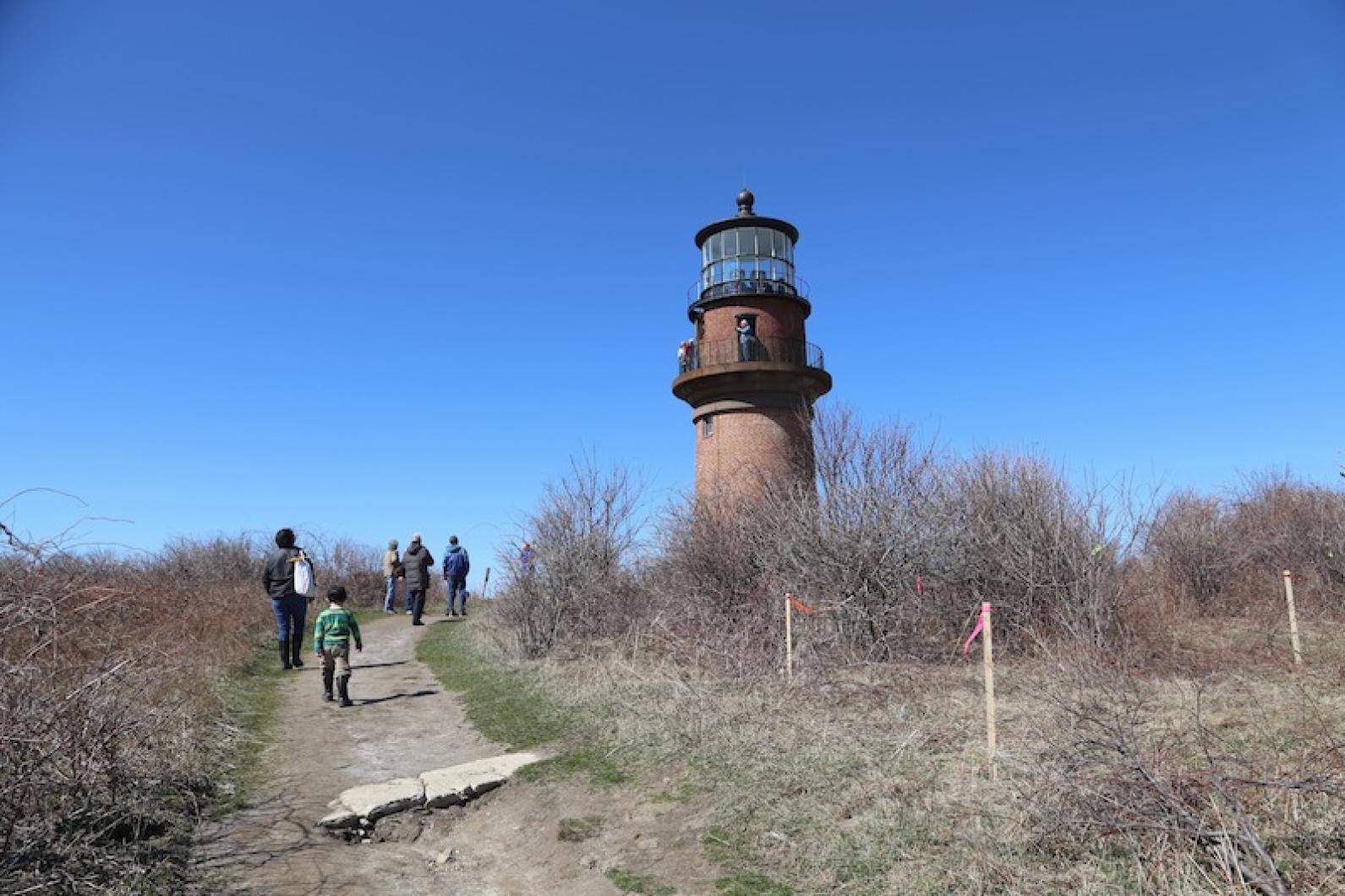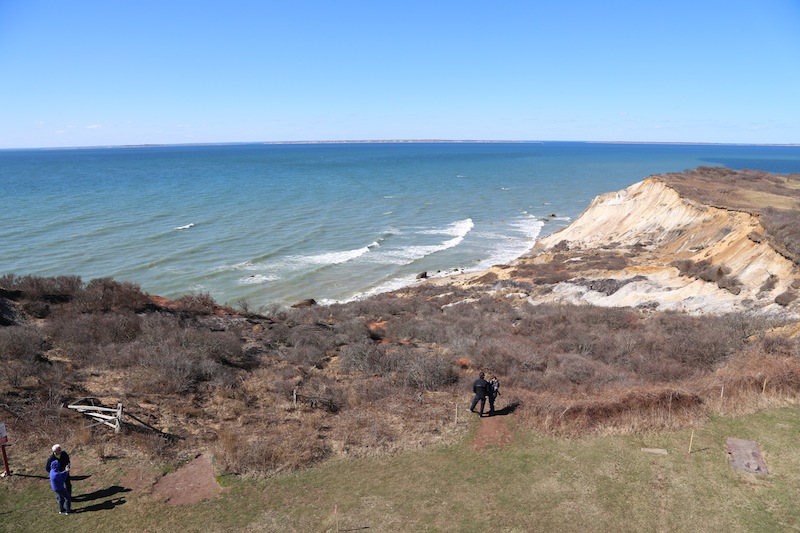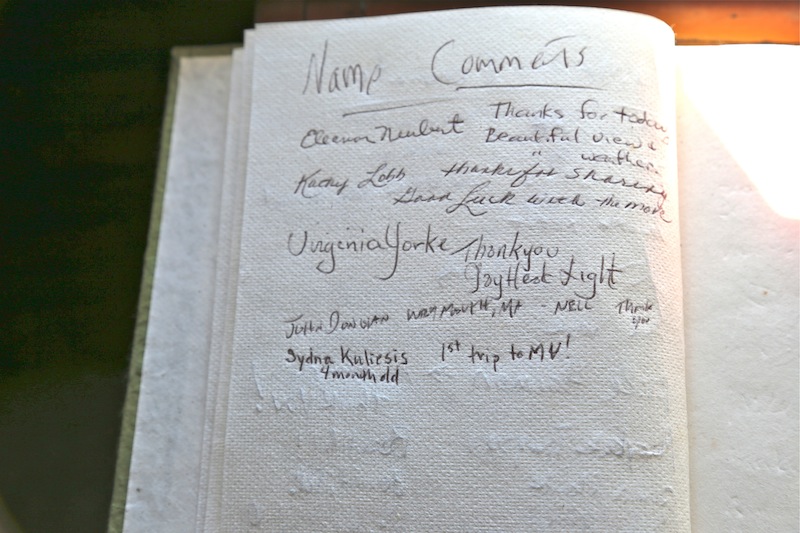A steady stream of visitors on Saturday made one last visit to the Gay Head Light, which will soon be moved 190 feet from the eroding cliffs looking out toward Cuttyhunk and Rhode Island in the distance.
The area surrounding the 1856 lighthouse has been fenced off for several days, with a sign saying closed for the season. But on Saturday, summer-like crowds gathered under a nearly cloudless sky for the last goodbye before the move.
“I don’t think I’d ever climbed to the very top,” said Pat Crosson, enjoying the view from the light room. Her first visit to the cliffs was 15 or 20 years ago, long before she moved to the Island full time. “This was the first thing you did,” she said. “You drove out here and you walked around and you came to see the lighthouse.”
A constellation of wooden stakes below marked the brick foundation of a former lightkeeper’s quarters, along with the boundaries of the future excavation site and the footprint of a smaller lighthouse that stood during World War II. Each stake was coded with a colored ribbon.
Jennie Slossberg and her young son Gabriel had stopped by the lighthouse after attending a baby shower.
“Wow!” exclaimed Gabriel as he climbed the last few ladder rungs and saw the sloping clay cliffs and the procession of waves below. An osprey flew from a nesting pole in the distance.
Visitors climbed up and down the steps throughout the afternoon, taking pictures, pointing out landmarks and recalling memories of the lighthouse.
“You really feel the spirit of these cliffs and the clay,” said David Soltz, speaking with Liz Witham of Film-Truth Productions, which is documenting the move for the town of Aquinnah. “It’s a really special place and the lighthouse is a big part of it.”
Lighthouse keeper Richard Skidmore said the next step in the move will be to shut down the automated double cannon light and activate a temporary beacon, already in place above the Aquinnah shops.

The move itself, which is expected to happen in late May, will take anywhere from one to three weeks.
Benjamin Hall Jr. was visiting with his young daughters Astoria and Olympia. He recounted the story of how his great-great grandfather, Thomas Hayden Lambert, was born in the lighthouse during a storm in the 1800s. Mr. Lambert’s father, Frederick Lambert, was an assistant lightkeeper. “His wife came rushing over and said, ‘Something is wrong,’ and all of a sudden, the baby came,” Mr. Hall said. They signaled for the Wampanoag medicine woman, who wrapped the baby a blanket and placed him in a coal bucket near the fire to keep him warm.
Mr. Hall believed he was just a child when he last went inside the lighthouse. “It’s been a long time and I didn’t want to miss the opportunity,” he said.









Comments (5)
Comments
Comment policy »